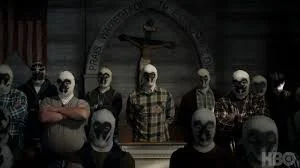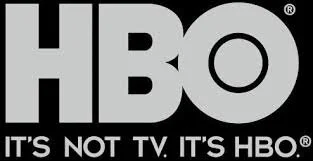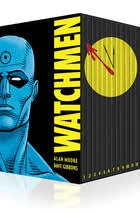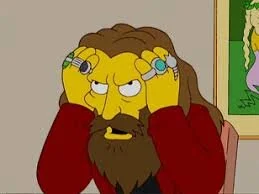Who Will Be Watching (the) Watchmen?
In October of 2019, HBO will premiere a television series called Watchmen, I haven’t decided yet if I’m thrilled or appalled. But I’d be lying if I said I wasn’t intrigued.
This blog, The Watchmen Watch, is devoted to the upcoming perfect storm of prestige mass culture, when HBO, still the biggest name in quality television, meets Alan Moore and Dave Gibbons’ Watchmen, still the gold standard for serious graphic novels.
WHO IS WATCHING WHOM?
It’s been over 30 years since the comic debuted, and twenty since HBO made television history with the premiere of The Sopranos. Viewers are inundated with so much quality programming in this era of Peak TV that critics lament their inability to keep up. Meanwhile, superheroes are everywhere, and comics have gained enough credibility that headlines along the line of “Biff! Bam! Pow! Comics aren’t for kids anymore” seem to have finally been retired.
So why is an HBO production of Watchmen so significant? And why should readers and scholars in the worlds of media, television, and comics studies take notice?
Because both Watchmen and some of the past two decades of HBO programming are artistic phenomena that not only stand out on the merits of their own accomplishments, but profoundly changed the medium and industry in which they circulate.
Because Watchmen is a graphic novel that resists adaptation and appropriation.
Because its co-creator, Alan Moore, is thoroughly and rightfully hostile to the graphic novel’s exploitation by its corporate owners (DC/Time Warner), requiring informed viewers to consider the ethics of even watching the new show
Because the upcoming series, which is not an adaptation but a “remix,” is the brainchild of Damon Lindelof, the man who captivated millions of viewers with his work on the intensely serialized Lost (2004-2010), only to lose the faith of a large portion of those viewers with a widely-reviled series finale.
Because that same Lindelof, in adapting Tom Perrotta’s novel The Leftovers for HBO, helmed some of the finest television ever made, with an immensely satisfying (and moving) finale.
And, finally finishing with finales, Watchmen’s last chapter manages both to wrap up all the complicated threads of plot, theme, and characterization, while still ending on an unsettling (but appropriate) note. Is Lindelof adding something of value to a self-contained classic, or messing with something better left alone?
HBO, Watchmen, and Serious Fun
Watchmen and such early HBO quality programming as The Sopranos were welcomed as powerful works of art in media and genres that were struggling both to achieve maturity and gain recognition for their achievement. Along the way, they changed how audiences experienced the art they encountered.
HBO drew attention with its tag line “It’s not TV. It’s HBO,” which managed to be self-aggrandizing and self-hating at the same time. The appeal was to a particular demographic, familiar to anyone Generation X and older: the people who proudly and smugly, through half-closed lids, declared “I don’t watch television.” HBO promised programming that was so good, and so artistically respectable, that it could stop being guilty and start being just pleasure.
ACTUALLY, IT’S BOTH.
Of course, The Sopranos (and Breaking Bad, and Deadwood) was TV, but by positioning these shows outside of this abject category, HBO was eventually able to redefine television as something no longer automatically associated with shame. This was just in time: with smartphones, tablets, and the streaming revolution, television would no longer be “television” at all.
Watchmen had far greater hurdles ahead of it than did The Sopranos: comics had been belittled and even demonized for decades. It was uninspiring (and possibly detrimental) entertainment for children, or it was the pathetic pastime of manchildren who refused to grow up, or, in the case of underground comics and some of the alternative comics to follow, lowbrow entertainment for hippies, stoners, and slackers. Almost everybody watched at least a little television (including most of the people who declared they never watched it), but the majority of Americans managed to navigate through adulthood just fine without reading a single comic.
IT’S NOT TV. IT’S FOUR-DIMENSIONAL CONSCIOUSNESS.
Still, Watchmen had the benefit of excellent timing: 1986, the year when most of Watchmen first saw print, was the year Frank Miller’s Batman: The Dark Knight Returns broke the barrier between the comics world and the mainstream. It was also the year in which the first half of Art Spiegelman’s Pulitzer-Prize winning Maus was collected in book form.
The prominence of these three works transformed the comics industry. Before Watchmen, comics were collectible because they were ephemeral. After their initial publication, most comics never saw print again. But Watchmen (along with Batman: The Dark Knight Returns) was such a critical success that DC collected it in a trade paperback. The comic book everyone was talking about was now available at book stores everywhere.
IT’S A NEW EDITION OF THE COMIC YOU ALREADY HAVE, BUT NOW SEVERAL TIMES MORE EXPENSIVE!
To market Watchmen, DC latched on to a term that had been floating around for over a decade: the “graphic novel.” Originally intended to differentiate between disposable, short-form comics and novelistic sustained narratives, it was an excellent fit for Moore’s and Gibbons’ masterpiece. But it also functioned as a rhetorical trick, rehabilitating a disreputable medium by giving it a less embarrassing name. This was HBO’s gimmick, a decade and a half early: it’s not comics, it’s a graphic novel.
The success of Watchmen, along with the adoption of the term “graphic novel,” put comics in the public eye as something more than just cheap entertainment. I have been dwelling on the marketing side of things in order to draw comparisons to HBO, but, just as The Sopranos was more than just a clever bit of scheduling supported by an ad campaign, Watchmen could not have had such an effect if were not for the book’s extraordinary artistry.
Watchmen is not just an exemplary comic; it is a self-reflective examinations of the power of the comics medium itself. The very features that make Watchmen an artistic success are the primary obstacle to any successful transfer to another medium. Watchmen appears to have been designed to make adaptation impossible, while its writer, who is still very much among the living, is adamant that the work should be left alone.
Fearful Symmetry
Unfortunately for Moore, he does not have creative control over Watchmen and any work derived from it (a story for a later post). First came the ill-fated Zach Snyder film adaptation (2009), followed by a set of prequel comics miniseries called “Before Watchmen” (2012). In 2017, DC started publishing Doomsday Clock, a Watchmen sequel that not only commits the cardinal sin of integrating Watchmen into the DC superhero universe, but develops a plot line that essentially blames every big editorial blunder the company has ever made on one of Moore’s and Gibbons’ most recognizable characters.
2019 looks like a bad year to be an Alan Moore purist, since the exploitation of Watchmen shows no signs of abating. Due to publishing delays, Doomsday Clock will not be finished by the time Lindelof’s HBO series premieres, which means that two sequels of dubious legitimacy will be unfolding simultaneously in two different media. It remains entirely possible that Lindelof’s television series, like DC’s Doomsday Clock, will merely end up confirming the futility of picking over Watchmen’s corpse in search of treasure. On an ethical level, though, there’s a strong argument to be made that quality is irrelevant. Which brings me to my own personal dilemma:
This show should never have been made, and I can’t wait to see it.
By all rights, I should refuse to watch HBO’s Watchmen, let alone write about it. Lacking the strength to back my own convictions, I am like a vegan who finds himself ordering a Big Mac at the drive-though on a lonely Friday night. If this were an eating disorder and I were more interesting, I could write a confessional memoir. But it’s a problem of art, culture, and ethics, and I’m an academic. Hence this project.
DON’T MAKE ALAN MOORE ANGRY. YOU WOULDN’T LIKE HIM WHEN HE’S ANGRY.
Tune in Next Time
HBO has yet to announce the exact date of Watchmen’s premiere, although we know it will drop some time in October. Once Watchmen begins its broadcast, this blog will take a look at each episode as it appears, in weekly posts until the end of the first (or final) season.
In the meantime, I will be writing posts that bring us from the initial publication of Watchmen through the various spin-offs and controversies that preceded the HBO series. Tentatively, that means twelve posts, including this one:
Three posts on the graphic novel itself, on its significance, its craft, and its influence.
Two posts on Alan Moore’s perpetual conflicts with DC Comics, initially over Watchmen, but eventually going much further.
One post on the Snyder film.
One post on Before Watchmen
One post on Grant Morrison’s post-Watchmen riffs
One post on the recently-completed Peter Cannon: Thunderbolt comic book series, a revision of Watchmen’s revisionism
One post on Doomsday Clock.
New posts will go up on Tuesday and Fridays for the first few weeks, then just on Tuesdays until the show premieres. After that, they will appear following each episode.
My hope is that this blog will be of value both to longtime readers of Alan Moore and to those who might be encountering this material for the first time. On a personal level, it represents my first public foray into comics criticism after a lifetime as a devoted reader, and over a decade of teaching graphic novels in the classroom.
This blog is a joint project with Cornell University Press (publisher of my last two books), and I am grateful in particular to Mahinder Kingra for his support and enthusiasm. Once the initial set of pre-air posts are complete, I will be launching another online comics project with Cornell, a real-time posting of my next book in progress, tentatively titled Marvel Comics in the 1970s: The World Inside Your Head.
See you in the funny papers.
Eliot Borenstein
On Friday: What Makes the Superhero Tick?




